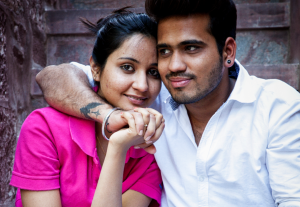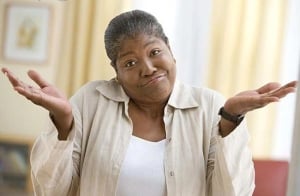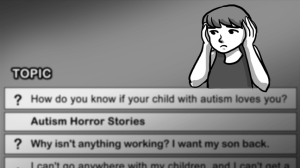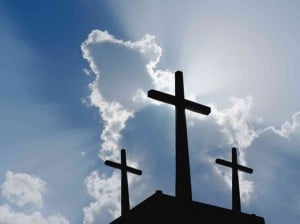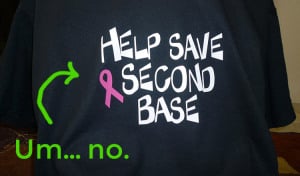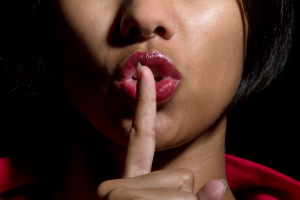
Source: Getty Images
Growing up in the Midwest, I can remember sitting in school, learning about the Civil War and the (supposed) reasons behind it: White Southerners kept Black people as slaves, treated them as second-class citizens (or less than), worked them to the bone, and refused to give up this free labor until the inevitable result was war.
We were taught how wrong this was — the enslavement of our fellow citizens, the rendering of other people as less than human, simply because their skin was a different shade than ours.
We were taught that Southerners held racist and stereotypical views toward a group of people common to their geographical area, yet we refused to acknowledge our own stereotypical views toward the group of people common to our geographical area — Native Americans.
And growing up, I heard many things said about the Native American ethnicity.
Some things were good, most were bad, but all had one thing in common: They were sweeping generalizations – overarching assumptions that ascribe a specific set of characteristics to all people of a certain culture. Otherwise known as stereotypes.
My fellow Midwesterners had some learning to do.
Like those Southerners of the Civil War era (and others who hold racist beliefs today), we needed to move beyond stereotypical perceptions of Native Americans.
But to move beyond stereotypes, first we have to understand them.
Negative Stereotypes
1. All Native Americans are alcoholics.
One of the stereotypes ascribed most commonly to Native Americans is that they are all alcoholics.
This is simply untrue.
According to a study published by the National Institute On Alcohol Abuse And Alcoholism (NIAAA), white people — specifically, white men — are more likely than any other demographic group to drink alcohol on a daily basis, start drinking at a younger age, and drive while under the influence of alcohol.
Furthermore, this same study acknowledges that the alcoholism that does exist within Native American culture is linked to the culture’s history of economic disadvantages and racial discrimination.
In other words, those that do suffer from alcoholism within the Native community may be trapped in a cycle of oppression and hardship that’s difficult to break free from.
2. Native Americans are lazy.
As a whole, the term “laziness” is difficult to define.
However, in U.S. culture, we tend to say people are lazy if they lack concrete goals, fail in their education, or lack what is known as “work ethic.”
If we use this ethnocentric definition of laziness in examining the Native population, we see that they are far from lazy.
77 percent have a high school degree, and although only 13 percent have a bachelor’s degree, this percentage has doubled within the last ten years.
In addition, of those 25 and older with a bachelor’s degree, 78 percent are within the fields of science and engineering, traditionally higher-paying occupations.
3. All Native Americans live on reservations.
Actually, there are only 324 federally recognized reservations and as of 2010, only 22% of Native Americans live on them.
4. American Indians receive special benefits and privileges from the government.
Okay, here’s the deal on this one: Yes, Native Americans often receive educational benefits like reduced tuition and Pell Grants, but so do other historically disadvantaged people, like the disabled and war veterans.
Why are American Indians called out for the “special” benefits they receive, while others are not?
Besides, the government took their land.
By giving Native people educational and monetary advantages, we are simply fulfilling a legal contract in exchange for the cessation of their land.
This “special treatment” is not, in fact, special treatment at all, but rather, part of an agreement that still stands today.
5. Native Americans overreact to their likenesses being used in school celebrations or as team mascots.
When I was in high school, a Native American student petitioned the school to stop using the term “Arikara” (in reference to the Native tribe of the Dakotas) as the name of its homecoming celebration.
She also petitioned to stop the use of the terms “Chief” and “Princess” and to ban the “ceremonial Arikara dance” (which included a bunch of white Midwestern teens dressed in Indian costumes doing their version of a rain dance to tribal drumbeats).
And people. Flipped. Out.
“Don’t you get it? We’re celebrating your culture, not demeaning it!” we said.
Riiiight.
Because white people smearing war paint on their faces and donning headdresses is soo different from dressing in blackface and performing slapstick comedy in front of a crowd.
Here’s the thing: If we want to celebrate Native culture, we must respect it.
And this means not making a mockery of it in the name of “school tradition.”
Positive Stereotypes
Some people don’t understand the problem with positive stereotypes.
After all, who wouldn’t want to be like the wise, strong Native American shaman (which isn’t even a term Natives use in their culture, by the way — it originated in Europe) from the movie Poltergeist II — yes, I’m dating myself here — who uses his supernatural Indian powers to save the Freeling family from the evil forces invading their home — and using cool Indian animal metaphors while doing it?
But the thing about positive stereotypes is that they set the bar unrealistically high.
And it’s still problematic when you assign one idea to an entire group of people.
1. Native Americans are spiritual and wise.
While it’s true that Natives have a history threaded with cultural traditions, it would be inaccurate to say that every one of them is spiritual and brimming with vats of wisdom ready to be dispensed at any time.
It’s just like saying that all Canadians are super laid-back, all New Englanders are punctual, and all Southerners are hospitable.
Just because you see it portrayed on TV or read about it in a book doesn’t make it accurate for every individual, even if it’s accurate for some.
Having these pre-conceived “positive” notions of qualities that people of certain cultures or ethnicities are supposed to possess only places undue pressure on those who don’t “measure up.”
2. American Indians are animal lovers, tree-huggers, and sun-worshippers.
When we think of the Native culture, often the first thing to come to mind is their supposed love of animals — especially eagles and wolves.
We also tend to think of Natives as being extreme environmentalists who worship nature and the earth.
According to this great resource, Native Americans worship a Supreme Being just like other cultures do.
The stereotype of the nature-worshipping Indian comes from early European settlers in America who observed Native peoples raising their hands to the sky in the form of prayer, which they misinterpreted as “sun-worshipping.”
The animal-loving stereotype may also have its roots in early European colonization. Early Native Americans observed the behavior of animals to learn how to hunt and survive in undeveloped land, similar to what other hunter/gatherer societies did.
So just because Native American ancestors observed the behavior of animals and tried to understand their environment, doesn’t mean they are tree-worshippers or extreme environmentalists.
And even if some are, who are we to judge?
3. Native Americans are all dancers and storytellers.
Again, some traditional dancing and storytelling is part of Native culture — just like the tango and merengue are part of Latin culture and gospel music is part of African culture.
But to say that all Natives are rain-dancers is just like saying that all Latin Americans dance like Ricky Martin, all Africans have great singing voices, and that all Jewish people are good with money.
And therein lies the problem: If we already believe something about someone, what motivation do we have to get to know them as individual people?
—
Fortunately, there are a few things that we can do to acknowledge when we’re stereotyping and move past it:
- Be honest with yourself. If you hold assumptions about people based on their race, class, sex, social status, or any other demographic characteristics, acknowledge that it’s an issue for you, even if it’s hard to admit or makes you feel embarrassed.
- Check yourself. About to tell a racist joke? Catch yourself in the act, and stop before you go through with it.
- Step outside your comfort zone. Learn about people of other cultures, ethnicities, and religions. The more you learn about others, the less likely you are to judge them.
- Correct others when they stereotype. When you hear others make racist, offensive, or stereotypical remarks, call them out on it! When engage others in discussion of their own prejudices, we engage in positive dialogue and increase our own awareness as well.
To move beyond stereotypes, first we have to understand them.
I’m still working on my fellow Midwesterners to move beyond their prejudices.
I hope that one day, we can talk openly and respectfully about the Native culture, without letting these learned prejudices crowd our perceptions.
Want to discuss this further? Login to our online forum and start a post! If you’re not already registered as a forum user, please register first here.
Shannon Ridgway is a Contributing Writer to Everyday Feminism from the great flyover state of South Dakota (the one with the monument of presidential heads). In her free time, Shannon enjoys reading, writing, jamming out to ’80s music and Zumba, and she will go to great lengths to find the perfect enchilada. Follow her on Twitter@sridgway1980. Read her articles here.
Search our 3000+ articles!
Read our articles about:
Our online racial justice training
Used by hundreds of universities, non-profits, and businesses.
Click to learn more







